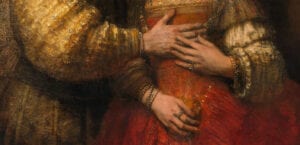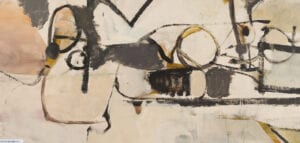Discernment.
By Steven Kenny

The ability to judge well.
The concept of discernment has been on my mind a lot lately. Probably because the older I get I have an increasing awareness of its artistic importance. I’m coming to realize that discernment on the part of the artist is an integral part of what makes a work of art ‘good.’
When artists are first setting out on their careers, discernment is not typically a tool they have at their disposal. The ability to judge well and make informed decisions comes with time and practice. In the case of visual artists it also comes with looking at a LOT of other works of art and trying to understand how those other artists went about constructing them.
Years ago I had an epiphany while visiting a Rembrandt retrospective in Amsterdam. Maybe it was jet lag but while looking closely at his paintings I felt as though I was tapping into his thoughts at the time that he was painting. Each brushstroke seemed to convey his emotional state and decision-making process as he laid the paint on the canvas.
Appreciating visual art is like reading. We use our eyes (assisted by brains and hearts) to make sense of the thing that we give our attention to. But, like a poorly written book, if the pieces of the narrative aren’t placed in a thoughtful, cohesive order we lose attention. It’s up to the artist to keep us engaged. Having said that, however, a work of art may SEEM random or discordant but that impression actually may be the artist’s intention.

In the case of painting (be it representation, abstraction, or any style in between) the artist must make decisions at every step in the creative process. We must know, through past trial and error, what works, what doesn’t work, and why. We must see the work critically through our own eyes and the eyes of the potential viewer, simultaneously.
Where and when to place emphasis, how to make transitions from one passage to another, when to turn up the volume and when to be silent — all these must be carefully considered and re-considered during the creation of a work. Knowing how to reveal the thing you’re trying to convey is the key. And this isn’t just a mechanical process, it’s also an emotional one.
All this easy to say but it may be the greatest challenge for any artist. Adding to the burden is the fact that no two artists will make the same choices and decisions. How could they? There are as many solutions as there are artists. The trick is to find what works for you in any given moment. That’s the thrill of making art!


